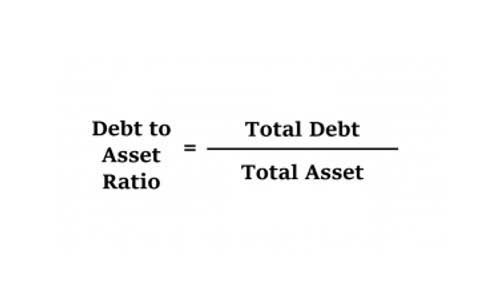Contra Entry Example & Journal

As mentioned, contra asset accounts usually have a negative value which is the same as a credit balance. That is to completely or partially offset the balance of their related asset accounts. Asset accounts usually have a positive value which is the same as a debit balance. To illustrate the contra revenue account Sales Returns and Allowances, let’s assume that Company K sells $100,000 of merchandise on credit. It will debit Accounts Receivable for $100,000 and will credit Sales for $100,000. If a customer returns $500 of this merchandise, Company K will debit Sales Returns and Allowances for $500 and will credit Accounts Receivable for $500.
- If a customer returns $500 of this merchandise, Company K will debit Sales Returns and Allowances for $500 and will credit Accounts Receivable for $500.
- The accumulated depreciation will ultimately reduce the value of fixed assets when the two accounts are netted with each other.
- If a contra account is not used, it can be difficult to determine historical costs, which can make tax preparation more difficult and time-consuming.
- Double Entry Bookkeeping is here to provide you with free online information to help you learn and understand bookkeeping and introductory accounting.
- Furthermore, if you subsequently pay off that debt early and capture a discount, the contra liability account — Discount Notes Payable — would record those savings.
Overview: What is a contra asset account?

Send an invoice to accounts receivable if you are requesting payment for goods or services provided. If you receive an invoice from a supplier or vendor, it goes to accounts payable because you owe money for goods or services received. Accounts receivable handles incoming payments, while accounts payable manages outgoing payments. When the original dollar amount is kept in the original account and a separate account is used for recording the deduction, the resulting financial information becomes more transparent and helpful for stakeholders.
What Is a Contra Liability Account
Therefore, to ensure accounts receivable stays clean and transparent, CCC will record $2,500 in the contra asset account called “Allowance for Doubtful Accounts”. This will ensure the net value of accounts receivable at year-end is not overstated. This means that accounts receivables have a debit balance of $10,000, and the firm credits revenue for $10,000. A contra asset account is an account in the balance sheet that offsets the balance of a regular asset account. A contra revenue account is a revenue account that is expected to have a debit balance (instead of the usual credit balance).

Contra asset accounts journal entries
Harold Averkamp (CPA, MBA) has worked as a university accounting instructor, accountant, and consultant for more than 25 years. Contra Accounts serve as a reduction to the contra expense account balance of their corresponding accounts to find their net values. If you keep a lot of inventory in stock, chances are that some of the inventory will become obsolete.
Examples of a contra revenue accounts include sales returns, sales discounts, and sales allowances. You debit the contra revenue accounts and credit the corresponding revenue accounts. For example, when you debit the balance in sales returns account, make sure that you offset the sales revenue account with a credit balance. A contra account is a negative account that is netted from the balance of another account on the balance sheet. The two most common contra accounts are the allowance for doubtful accounts/bad debt reserve, which is subtracted from accounts receivable, and accumulated depreciation, which is subtracted from fixed assets. The most common contra type, contra assets, records the loss in value of any asset accounts listed in your general ledger.
Contra equity account

The balance in the allowance for doubtful accounts represents the dollar amount of the current accounts receivable balance that is expected to be uncollectible. The amount is reported on the balance sheet in the asset section immediately below accounts receivable. My Accounting Course is a world-class educational resource developed by experts to simplify accounting, finance, & investment analysis topics, so students and professionals can learn and propel their careers. In other words, contra revenue is a deduction from gross revenue, which results in net revenue. The sales allowance shows the discounts given to customers when returning the product. Nor would it count as a liability as it does not reflect a future obligation.
- We believe that sustainable investing is not just an important climate solution, but a smart way to invest.
- In this way, a contra asset (credit) lowers the overall value of your accounts receivables (debit) on the balance sheet.
- Companies like to depreciate assets as quickly as possible to get the tax savings, so the balance sheet may not state the true value of fixed assets.
- The bond is listed on the balance sheet at the full amount of $1,000, but the cash received is just $950, so a contra liability for the discount is listed to make the entry balance.
- Treasure stock is a good example as it carries a debit balance and decreases the overall stockholders’ equity.
- Accumulated depreciation is the total of all depreciation that has been charged to existing fixed assets such as equipment and buildings.
- Key examples of contra asset accounts include allowance for doubtful accounts and accumulated depreciation.
- Regardless of company policies and procedures for credit collections, the risk of the failure to receive payment is always present in a transaction utilizing credit.
- The revenue contra accounts Sales Returns, Discounts and Allowances are subtracted from the main Sales Revenue account to present the net balance on a company’s income statement.
- For example, if a piece of heavy machinery is purchased for $10,000, that $10,000 figure is maintained on the general ledger even as the asset’s depreciation is recorded separately.
- He has been a manager and an auditor with Deloitte, a big 4 accountancy firm, and holds a degree from Loughborough University.
- In many different aspects of business, a rough estimation is that 80% of account receivable balances are made up of a small concentration (i.e. 20%) of vendors.
- Therefore, contra accounts, though they represent a positive amount, are used to net reduce a gross amount.
This type of account is a contra asset that reduces the amount of the gross accounts receivable account. Contra assets are still recorded along with other assets, though their natural balance is opposite of assets. While assets have natural debit balances and increase with a debit, contra assets have natural credit balance and increase with a credit. For example, if your business has accounts receivable of $50,000 and an allowance for doubtful debts account totalling $5,000, the net accounts receivable is $45,000. In this way, a contra asset (credit) lowers the overall value of your accounts receivables (debit) on the balance sheet. The two most common contra accounts on a balance are accumulated depreciation and the allowance for doubtful debts.
- To convert your invoice management efforts to an electronic format that can easily share data with other financial systems, businesses can leverage Invoiced’s E-invoice Network.
- Contra equity reduces the total number of outstanding shares on the balance sheet.
- And by comparing these contras against their corresponding parent accounts, you can better understand the actual value of the assets retained by your business.
- Let’s go over how they work and what the main types are, and then finish with an example.
- For this example, let’s say a company predicts it will incur $500,000 of uncollected accounts receivable.
- The contra accounts will be grouped in the same category on the balance sheet or income statement as their related accounts.
